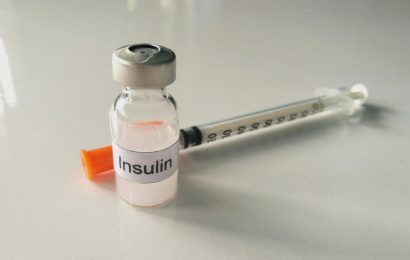One danger of low blood sugar (hypoglycemia) is that you might not know you’re having it. Low glucose levels affect your brain and can leave you unable to recognize a problem or seek a solution.
Low blood sugar is not a symptom of diabetes. It’s a side effect of diabetes treatment. It happens when you have too much insulin for the amount of food you have eaten.
You can get hypoglycemia (high-po-glye-SEEM-e-uh) if you take insulin or if you take pills that stimulate your body to release insulin from the pancreas. These pills include sulfonylureas, such as chlorpropamide (brand name Diabinese), tolbutamide (Orinase), glyburide (DiaBeta, Glynase, Micronase), glimepiride (Amaryl), glipizide (Glucotrol, Glucotrol XL), tolazamide (Tolinase), and tolbutamide (Orinase).
Other drugs that raise insulin and can lead to hypoglycemia include the meglitinides, such as repaglinide (Prandin) and nateglinide (Starlix). Combination drugs that contain sulfonylureas or meglitinides can also potentially cause lows. You can see a more complete list of drugs that cause hypoglycemia here.
If you have too much insulin and don’t eat enough, or you exercise too much, you will likely develop low blood sugar. The symptoms can range from annoying, like excessive sweating, to life-threatening, like passing out while driving or having seizures.
Celia Kirkman, RN, CDE, wrote that “Hypoglycemia is a condition in which the brain does not have enough glucose to carry out its many functions.” You can’t pay attention to things, you’re less aware of your environment; you have less control of your emotions.
This is what makes low blood sugar hard to treat and prevent. Your brain is supposed to pick up warning signs and address problems, but your brain is impaired by low glucose.
Symptoms of low blood sugar
Most people get physical symptoms when glucose is low. Their body shakes, they get weak. They may have rapid heart rate and blurry vision. They may have sweating, tingling, headache, fatigue, or dizziness.
The mental symptoms can be more dangerous, but people may not be aware of them. They might get nervous. They might have mood swings and have trouble concentrating or thinking clearly. If blood sugars keep going down, they might cause loss of consciousness or seizures.
Why is it hard for many people to spot low blood sugars and do something about them? It’s often because the warning system wears out. Most of the symptoms — such as the shaking, rapid heartbeat, and sweating — are caused by a stress response. The body sees low sugar as a threat and secretes adrenaline, which causes the symptoms.
This system become less reliable as you age. According to an article on Diabetes Mall, “Symptoms of a low become less obvious after having diabetes for several years because repeated lows impair the body’s release of stress hormones.”
Without the physical symptoms, you’re left with the mental ones — mood changes, difficulty focusing, lack of awareness — and even these may be reduced over time. Even if they aren’t, those things are hard for a person to recognize, because the brain that should recognize them isn’t working right. Others may notice you have a problem, but you can’t see it. If they tell you about it, you might get angry. You can find yourself in arguments with family or coworkers because your emotions are out of your control.
I had a nasty fall last week because my brain was impaired like that. It wasn’t from low glucose levels; it was from getting too warm, a problem for people like me who have multiple sclerosis (MS).
I needed to transfer from my scooter to a car. Usually my body can tell if I can make a move or not, and I won’t try a transfer that’s too hard. But I was warm, and my mind was fuzzy, much like low glucose fuzziness. I didn’t pay attention like I should have. I tried to transfer anyway and wound up on the ground.
Not recognizing hypoglycemia symptoms could cause a situation such as going low while walking in a park, but not stopping or eating, because your mind didn’t pick up the danger signs. You might collapse, or you might lose your way because your mind’s not clear. Who knows where you might wind up?
Preventing low blood sugar
You can prevent low blood sugars by modifying your diabetes management. “For example,” says Kirkman, “if you find you tend to develop hypoglycemia after a certain type of exercise, you can learn (with the help of your doctor or diabetes educator) how to adjust your food or medicine on the days you perform that exercise.”
Learn the symptoms of hypoglycemia and check your glucose or take glucose tablets if you recognize them in yourself. You can use a rapid-acting carbohydrate like saltine crackers, hard candies, or fruit juice instead, but our blogger Scott Coulter writes here that glucose tabs are best.
But what if you don’t notice or recognize the symptoms? That’s the problem. One answer is to pay attention to what other people are telling you. Like if your wife says “You’re not acting like yourself,” or your husband says, “Maybe you should check your blood sugar,” you should probably check.
Sure, they may be blaming diabetes to win an argument, like one woman who told her husband and son to wash the dishes (their job) and was told by them to check her sugars. That happens, and her sugar was normal, and she let them know how she felt. But many times your sugar really is low. Families have a right to be concerned about lows, because they aren’t pleasant for loved ones. Hurtful things might be said, and the person with low sugar might not even remember.
So play it safe. Keep your glucose tablets and test strips handy and test any time someone indicates you’re acting or looking out of sorts. Your low-sugar brain may not recognize the danger.
***
My new e-book, The Book of Letting Go, which is book three in The Inn by the Healing Path: Stories on the Road to Wellness series, is now available at almost all e-book retailers. It contains seven healing stories of acceptance, forgiveness, nonattachment, and nonjudgment. You can get it at Smashwords (set your own price), and most other e-book retailers have it, too. Search for The Inn by the Healing Path: Stories on the Road to Wellness. Book 3: Letting Go. You can also read it on Kindle.
From its color to its scent, various characteristics of urine can help give a gauge of your health. Bookmark DiabetesSelfManagement.com and tune in tomorrow to learn how to read the signs from certified diabetes educator Amy Campbell.





